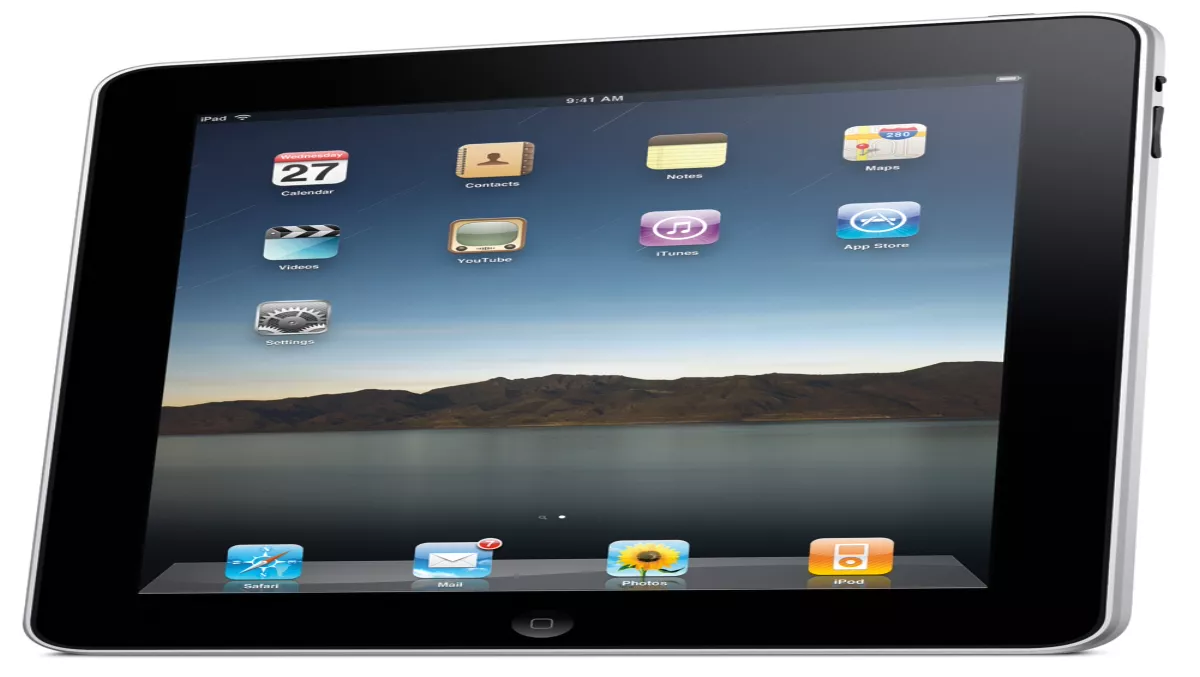
Apple’s iPad – it’s here!
A tablet computer of some description from Apple had been rumoured for some time now, and on January 29th NZ time, the company finally unveiled it for the entire world to see. We haven’t got our mitts on one yet
So, what is it exactly?
The iPad is a form factor that lies somewhere between a laptop computer and a smartphone (although it has no phone capabilities). Its primary purpose is the consumption of media, in particular iBooks, video, music, games and the Web. It features an LED-backlit 9.7-inch capacitive LCD touchscreen and a user interface very similar to that of Apple’s iPhone and iPod Touch devices. Although there will be specially designed apps that will make optimal use of the iPad’s screen real estate and resolution, existing iPhone and iPod Touch apps also run on the iPad. It comes in 16GB, 32GB and 64GB denominations of either the wi-fi or (from April) the wi-fi 3G varieties.
What’s this about an iBook service?
Apple has launched a service that will allow iPad users to download books, magazines, newspapers and other digital versions of print publications and then access the content using an iBook app on the device. At the time of launch, publishers such as Penguin Books, HarperCollins, Simon & Schuster, Macmillan Publishers and the Hachette Book Group USA announced their support for the iBookstore. Unfortunately, however, the iBookstore has been announced as a US-only service at this point in time, but stay tuned for any local developments in this space.
So, is the iPad any good?
Well, since we haven’t touched the thing yet, we can’t really comment. However, a quick glance over the coverage from those that did get the chance to try it out following its announcement shows that opinions are seriously mixed. Many critics are writing it off as simply a larger version of the iPod Touch or iPhone, adding that it lacks many of the features that could have made it a truly compelling device. iPad proponents, however, are saying that people who expect the iPad to replace their computers are missing the point, and that it will change the way in which consumers interface with media.
What are the pros?
Many critics are praising the iPad’s speed and responsiveness, exceptional screen resolution and relatively light weight. Tech pundits are also expecting many more publishers to come onboard with the iPad than with other eReader devices to date, owing to Apple’s famous revenue split. Publishers will enjoy the same revenue share that app developers do for the iPhone and iPod Touch currently: a 70/30 split in favour of the content provider (although iPad competitors adjusted their ratio similarly following Apple’s announcement). Some are excited about the iPad’s potential as a gaming platform, eliminating the ‘big-fingers, small-screen’ problem that hinders the iPhone’s potential. A number of technology writers have touted the potential of games and apps designed to make optimal use of the iPad’s features.
It also has an application suite called iWork that features word processing and spreadsheet programs.
In addition, the US price of between $US499 and $US829 is reasonable when compared to the iPhone price range, but at this time it is unclear what the price will be when it goes on sale in New Zealand.
And how about the cons?
Most of the criticisms of the iPad so far seem to hinge around what the device doesn’t do. For instance, iPhone and iPod Touch users have been crying out for multitasking: the ability to run two or more programs or applications simultaneously without having to close one in order to access the other. It’s not been included with the iPad, which many are dismissing as a major missed opportunity. The iPad is also missing a camera of any description, which is actually a step backwards from the iPhone and iPod Touch. Many hoped that an onboard video camera would feature on the iPad to facilitate video-conferencing. Also, the iPad 3G requires a miniSIM in order to access any Web content outside of a wi-fi connection, which limits your carrier options to those that support this relatively rare format. Finally, there is still no support for Adobe’s Flash multimedia format, which drives a very significant proportion of online animated content. In a nutshell, it could hinder many aspects of the browsing experience that you take for granted on your desktop computer.

